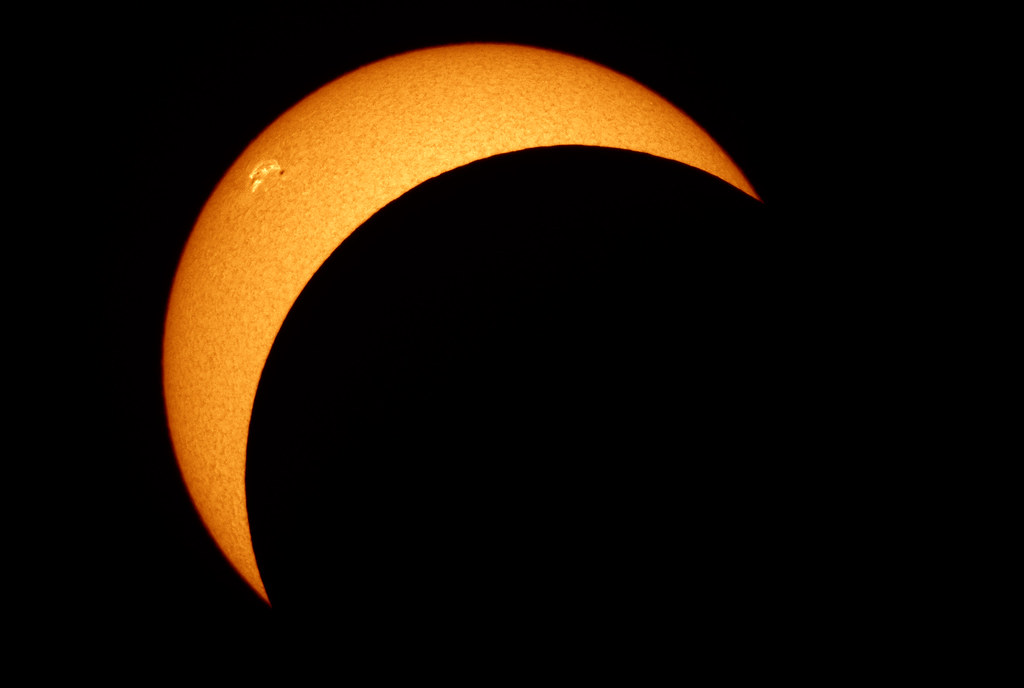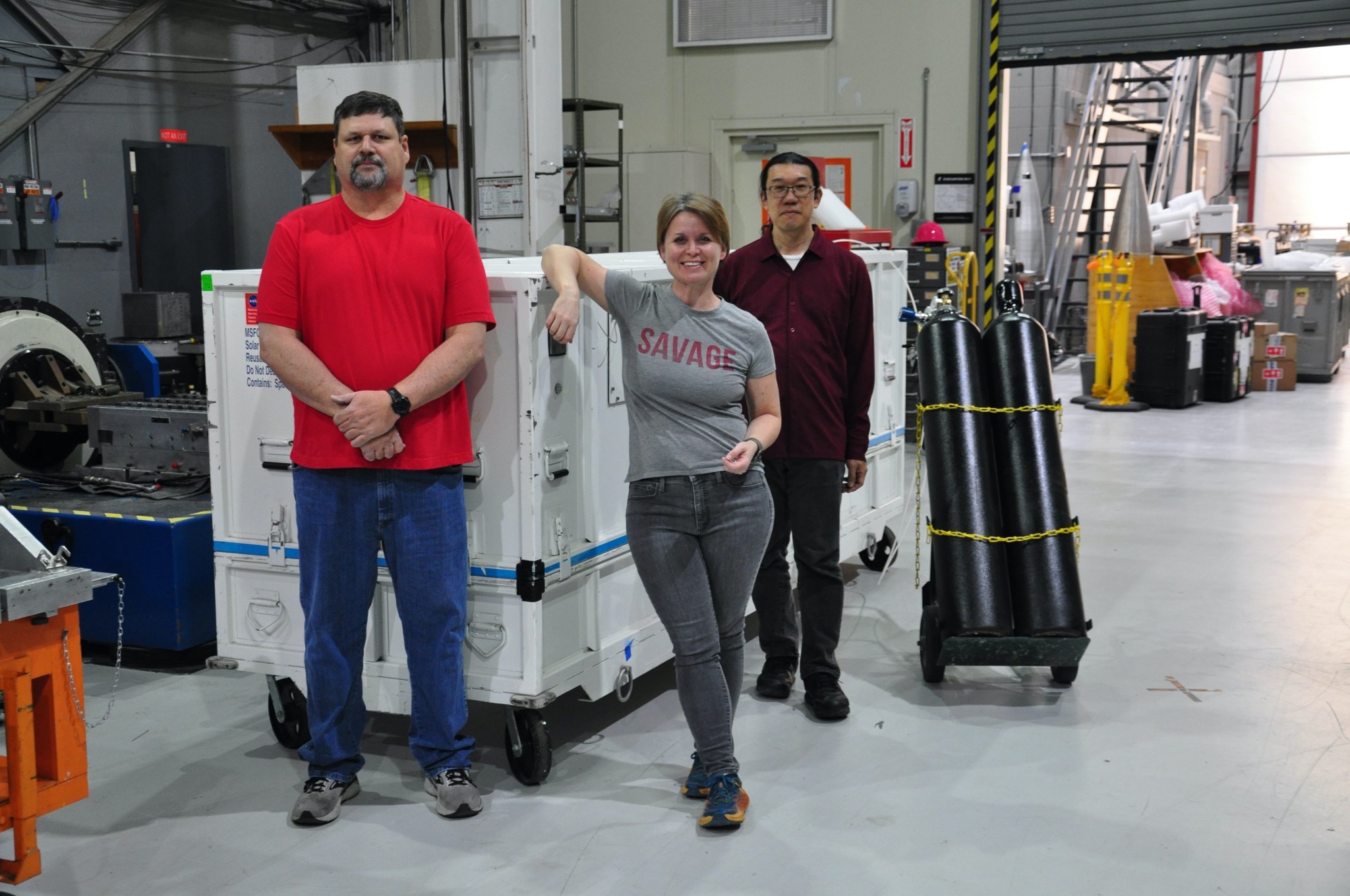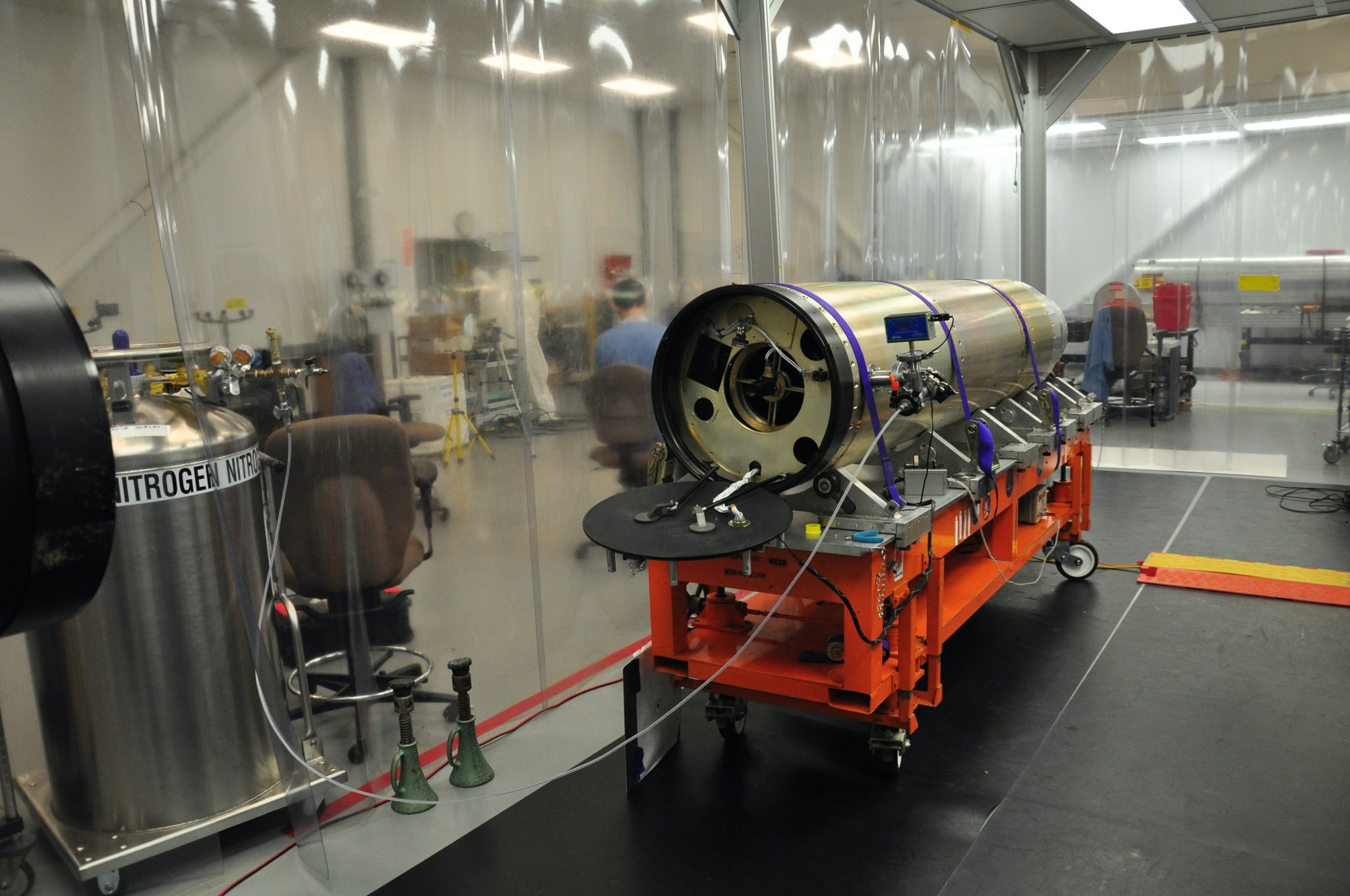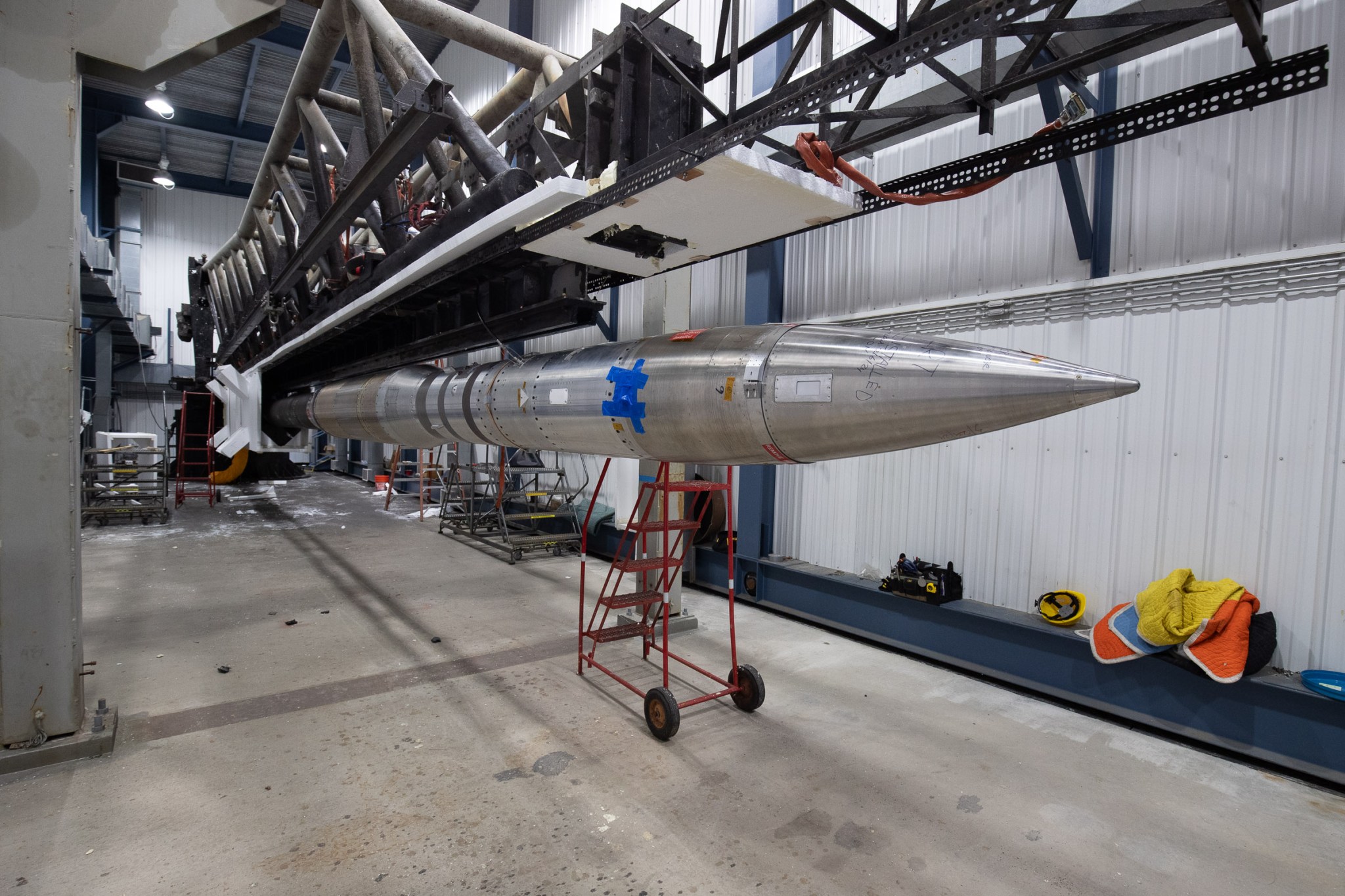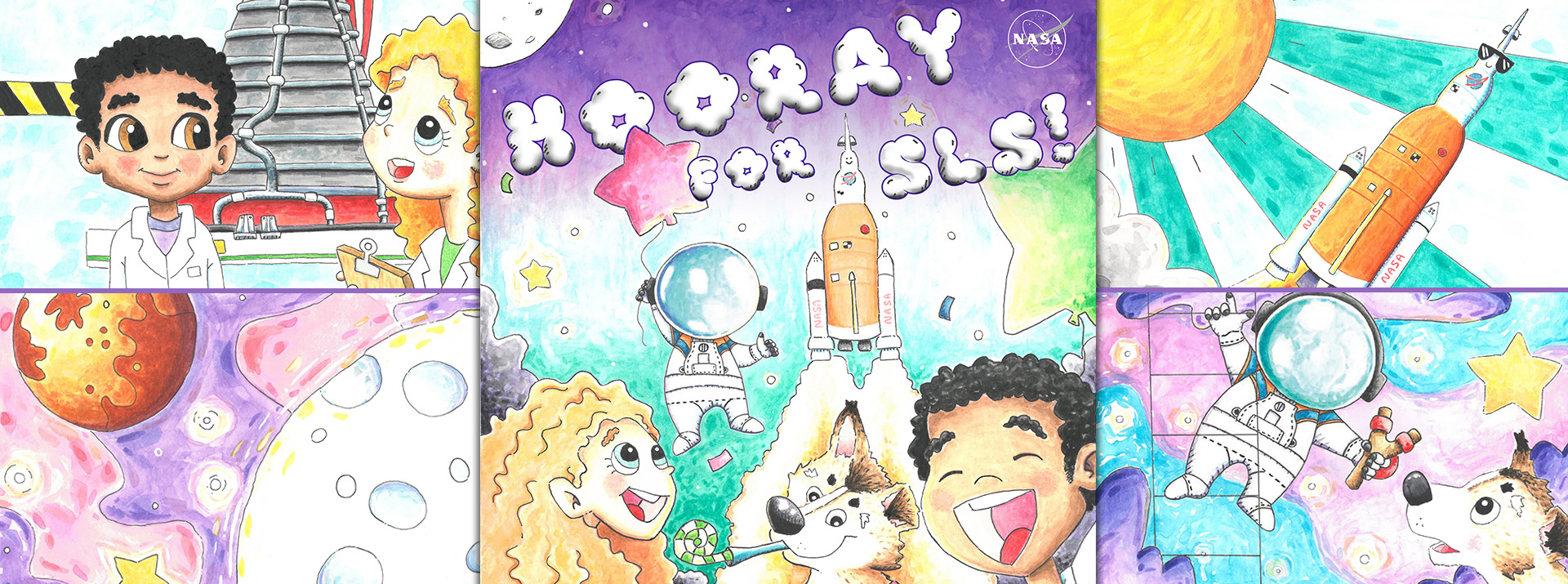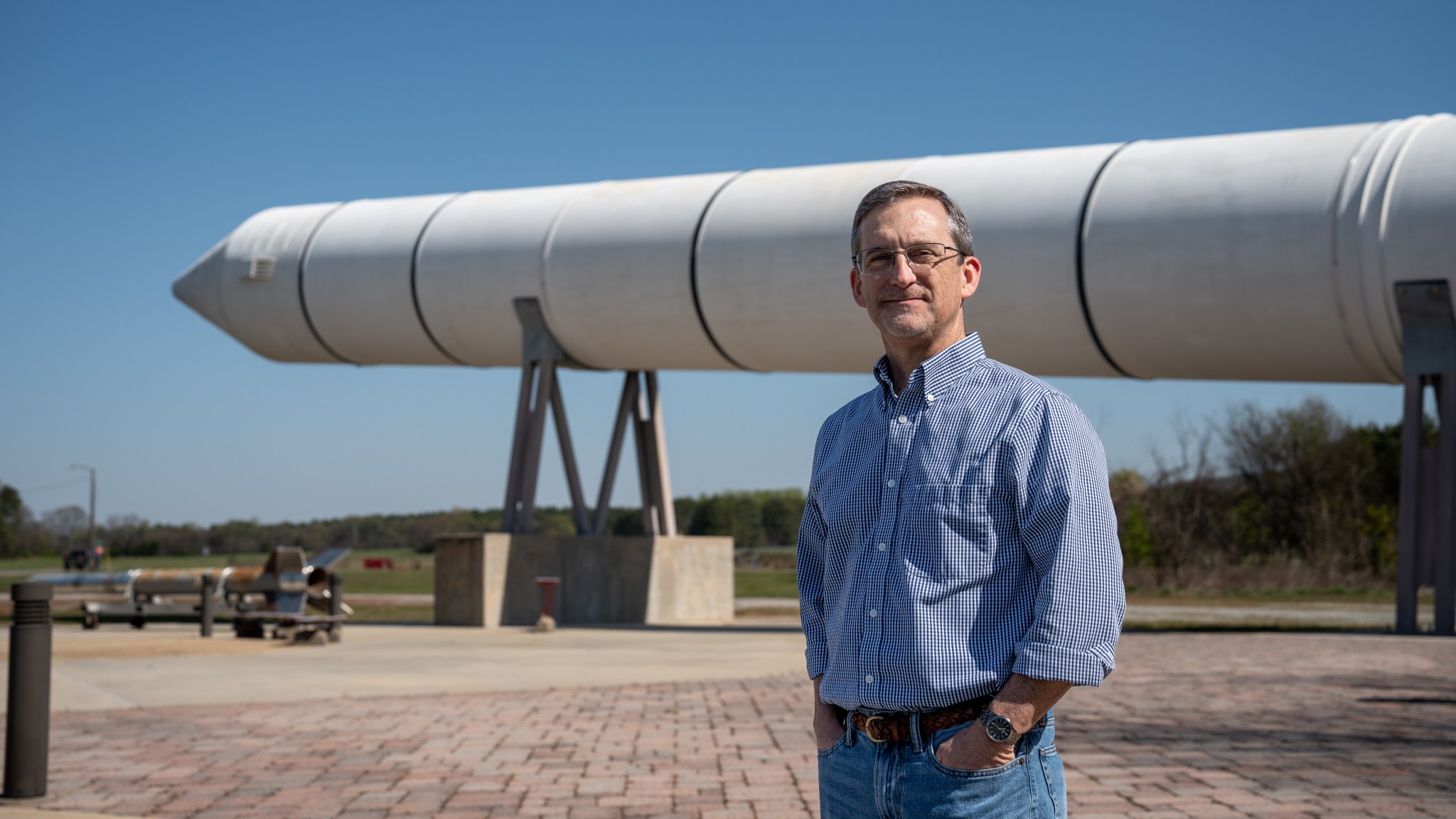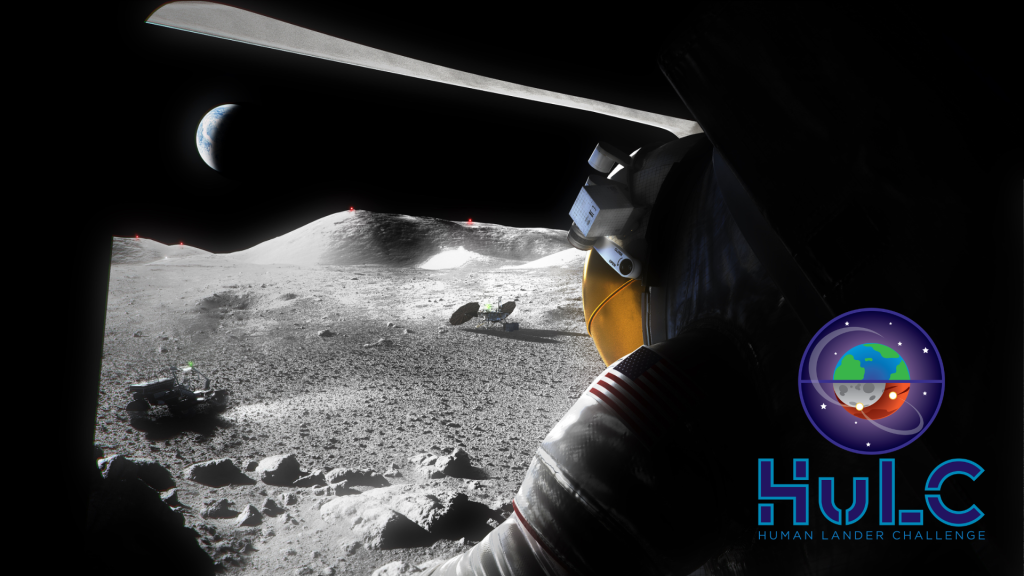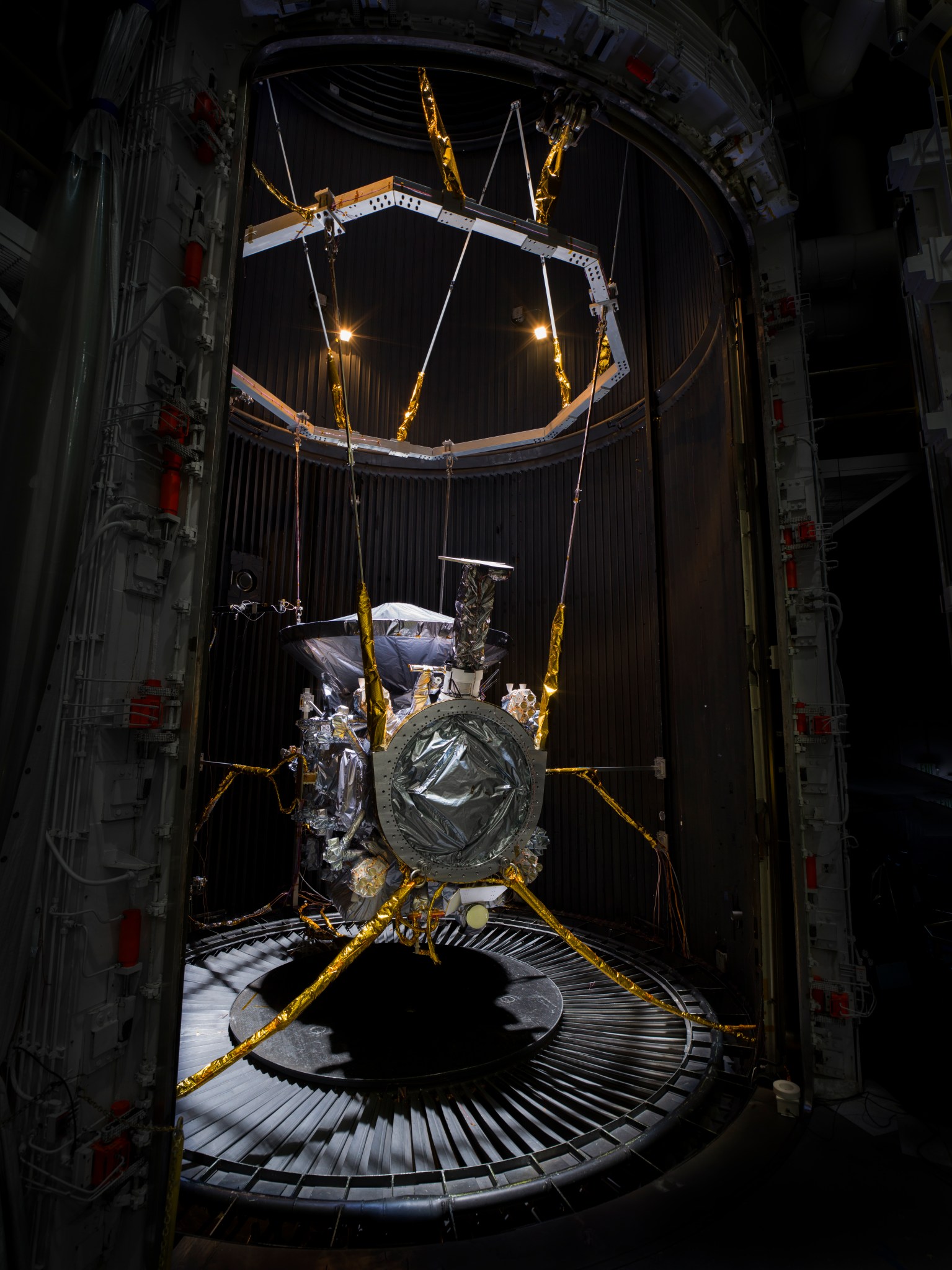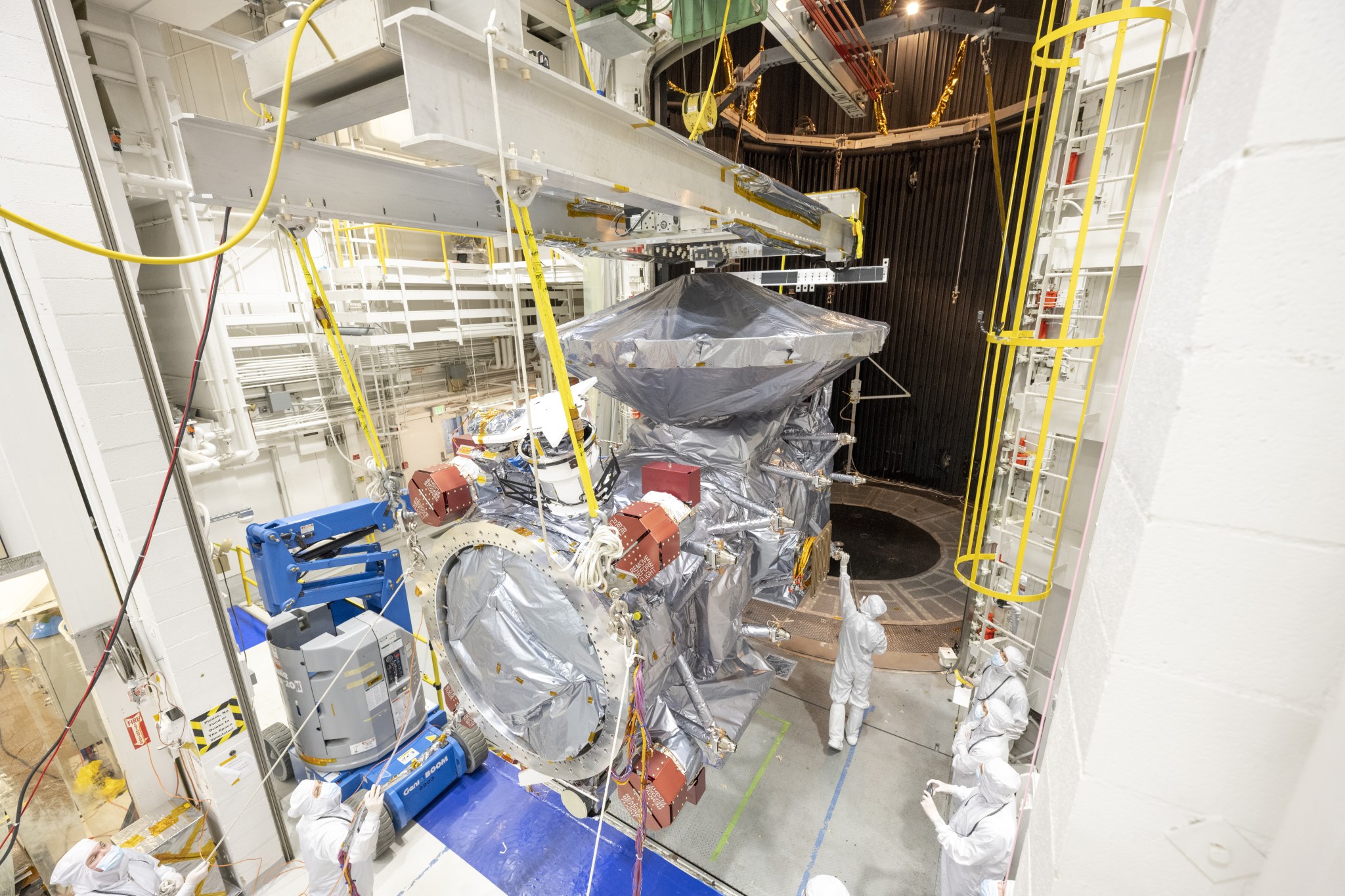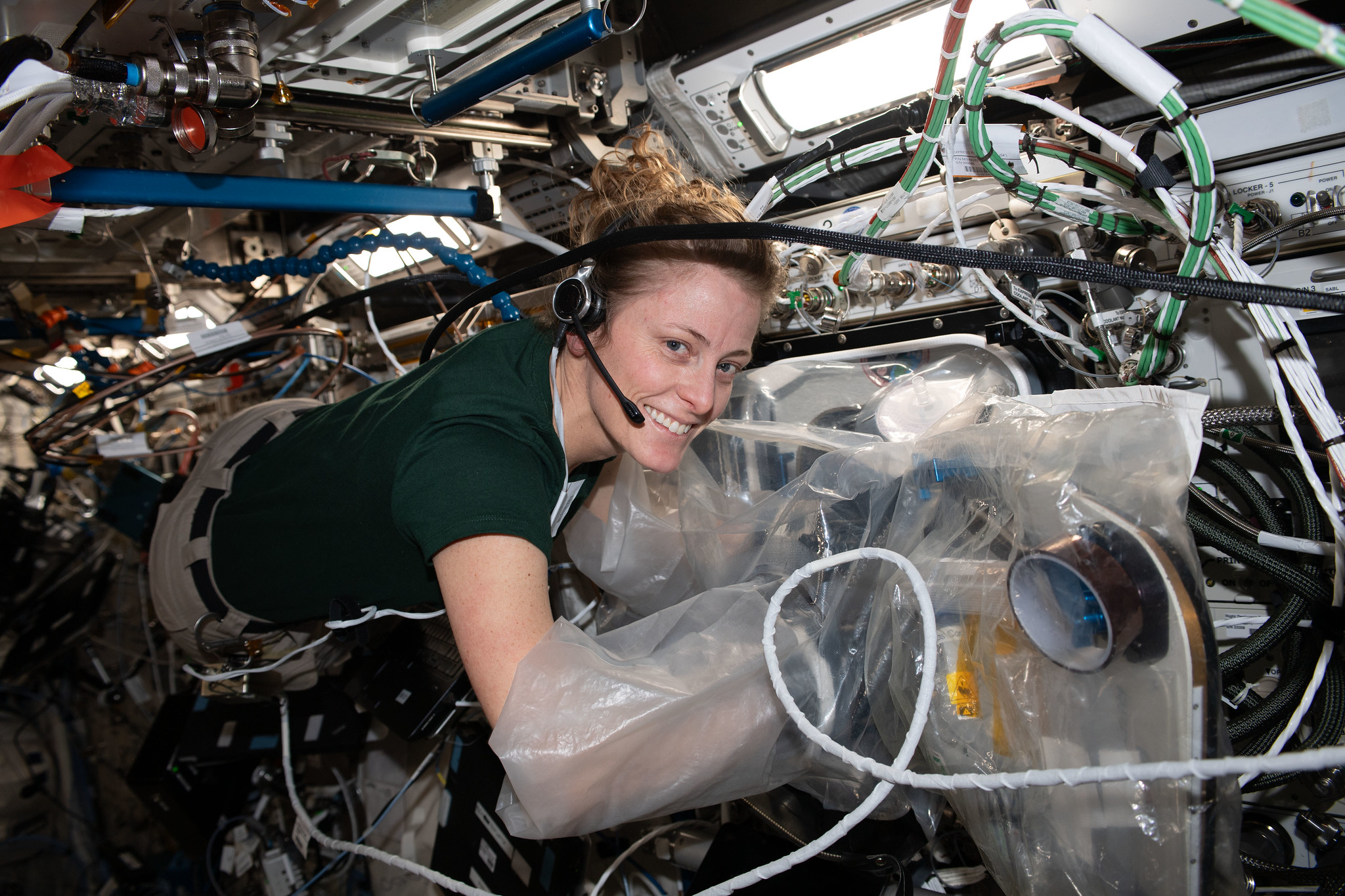Huntsville, Marshall Preparing to Celebrate Total Solar Eclipse
By Celine Smith
On April 8 between 1 and 3 p.m., the Moon will pass between the Sun and Earth to create a total solar eclipse for 15 states. While Alabama will experience a partial eclipse, area residents can enjoy some fun-filled festivities to celebrate the event.
The U.S. Space & Rocket Center in Huntsville, in collaboration with the Alabama Space Grant Consortium and NASA’s Marshall Space Flight Center, will host a family-friendly eclipse watch party. There will be children’s activities in the Spark!Lab, starting at 10 a.m. Dennis Gallagher, a plasma physicist within the Heliophysics and Planetary Science branch at Marshall, will give eclipse presentations at 11:30 a.m. and 12:30 p.m. in the National Geographic Theater at the center. Those attending the eclipse watch party will receive a pair of eclipse glasses with their ticket, which is included in the price of general admission to the rocket center. Civil servants can receive free admission for themselves and family members with their ID badge, while Marshall contractors can gain admission with their badge.
Marshall team members don’t have to leave the arsenal to enjoy the solar eclipse. Food trucks will be staying at the food corral during the eclipse, so viewers can enjoy lunch while witnessing the natural phenomenon.
Meanwhile, experts from NASA and Marshall have collaborated with the city of Russellville, Arkansas, to provide educational outreach opportunities and panel discussions. The public is invited to this free event, with more than 100,000 tourists expected to visit Russellville for the rare experience.
Due to the length of the eclipse totality in Russellville, NASA is planning to host part of the agency’s live television broadcast from the city, as well as conduct several scientific presentations and public events for visitors. There, the total eclipse will last for four minute and 11 seconds.
Everyone is invited to experience the eclipse through NASA’s live coverage on NASA+ and the NASA app. NASA also will stream the broadcast live on its Facebook, X, YouTube, and Twitch social media accounts, as well as a telescope-only feed of eclipse views on the NASA TV media channel and YouTube.
Those viewing the eclipse should take proper precautions to protect their eyes. Without protective eyewear during a partial eclipse, viewers are susceptible to eye damage. It’s also highly recommended that eclipse viewers wear a hat, use sunscreen, and avoid exposing a lot of skin.
According to Gallagher, the Sun’s magnetic field is affected by its rotation. When the Sun rotates enough, the magnetic field can no longer hold its energy releasing solar flares. There are even some instances where bundles of the Sun’s magnetic field and ionized gas are ejected together from the Sun’s surface, creating a coronal mass ejection. These arches and arcs may be visible during the eclipse.
“Luminous tendrils of ionized gas reaching two to three solar radii in all directions away from the Sun’s surface will be revealed in graceful loops and sweeping arches off into the distance,” Gallagher said.
“Coronal mass ejections and solar flare emissions are a direct hazard to humans and human made systems. Coronal mass ejections specifically interact with Earth’s magnetic field to create additional hazards in space and on Earth’s surface. While the Sun seems a steady life-giving companion, uninvolved with Earthly travails, a total solar eclipse offers everyone, including scientists, the chance to get a closer look at what goes on at the Sun behind the blinding glare of its nuclear heart.”
Read more about the 2024 total solar eclipse from NASA.
Smith, a Media Fusion employee, supports the Marshall Office of Communications.
Hi-C Rocket Experiment Could Provide New Look at Solar Flares
By Jessica Barnett
For a brief moment in April, team members with NASA’s Marshall Space Flight Center could get their best opportunity yet to study a solar flare using a combination of new technologies in the first-ever Solar Flare Sounding Rocket Campaign.
Teams are planning to launch two rocket experiments within a minute of each other during an active solar flare. The High-resolution Coronal Flare mission (Hi-C Flare) led by Marshall and the fourth Focusing Optics X-ray Solar Imager mission (FOXSI-4), led by the University of Minnesota, have complementary instrumentation designed to study the extreme energies involved with solar flares.
“This is a pioneering campaign,” said Sabrina Savage, principal investigator for Hi-C Flare. “Launching sounding rockets to observe the Sun to test new technologies optimized for flare observations has not even been an option until now.”
Following a month of integration and testing at White Sands Missile Range in New Mexico, the Hi-C Flare team is completing two weeks of launch site integration at the Poker Flat Research Range in Alaska. The planned campaign window will be open for two weeks, beginning April 5. Each morning, the teams will spend about five hours preparing the experiment for launch, followed by up to four hours of monitoring solar data for the right flare that meets the mission study criteria. If none occurs, the rockets will be restowed in shelters overnight, and the launch will be reattempted the next day.
But if the right one does appear, the experiments will launch on Black Brant IX sounding rockets. Hi-C Flare is equipped with the third iteration of the High-Resolution Coronal Imager, or Hi-C 3. This will be the fourth flight for Hi-C, but its first with such ride-along instruments as COOL-AID (COronal OverLapagram – Ancillary Imaging Diagnostics), CAPRI-SUN (high-Cadence low-energy Passband x-Ray detector with Integrated full-SUN field of view), and SSAXI (Swift Solar Activity X-ray Imager). With these new tools, the team hopes to further solar research by capturing data at flare energies in higher-than-ever resolution and cadence.
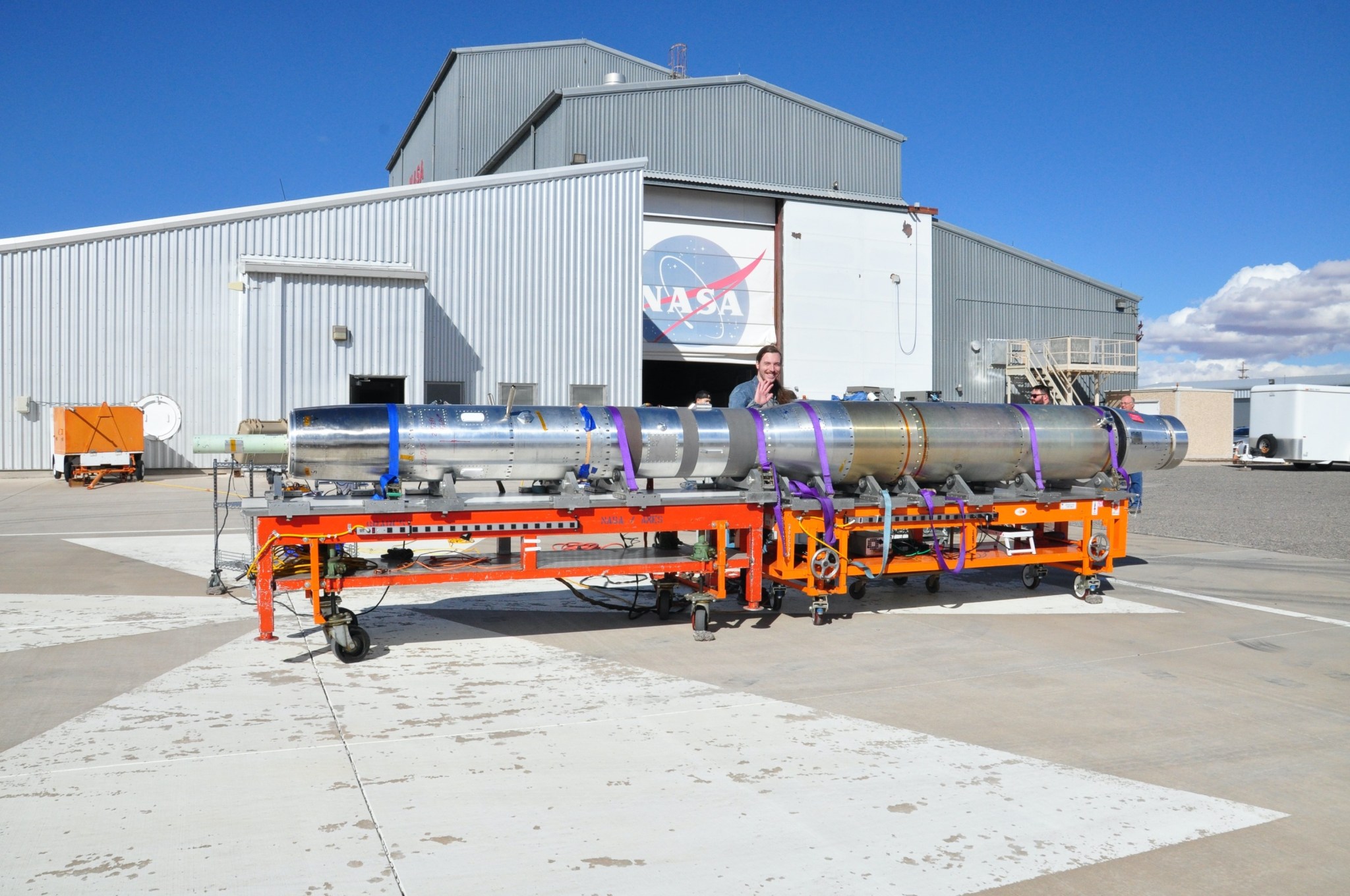
“It’s a different wavelength from previous Hi-C flights, there are different features that we expect to see on the Sun’s corona, and there’s a slightly different temperature range of features that we expect to see,” said Adam Kobelski, institutional principal investigator for the SSAXI instrument.
The Sun is currently experiencing the “solar maximum” phase of its activity cycle, which increases the chances of a solar flare occurring during the campaign window. The study requires a specific type of flare, one that registers as a C5-class or higher with a duration longer than the rocket flight. While it isn’t yet possible to precisely predict when a solar flare will occur or how long it will be, the team has developed algorithms to provide alerts and predictive diagnostics using data from solar telescopes in orbit, factoring in the complexity of active regions and real-time changes to X-ray and extreme ultraviolet solar output.
The alert won’t be instant, however. In fact, it could take several minutes for the information to get from a telescope in space to the team on the ground to the team members who launch the rocket – and even then, due to the science requirements for the two missions, Hi-C Flare is planning to launch after FOXSI-4 takes flight. The flare may have progressed by up to 10 minutes by the time Hi-C Flare begins making observations.
“That’s why we’re requiring a long-duration flare, so we can guarantee ourselves that we will see it,” said Genevieve Vigil, technical and camera lead for Hi-C and COOL-AID.
Once in air, sensors on the rocket will point the cameras toward the Sun and stabilize the instrumentation. Then, a shutter door will open and allow the cameras to acquire data for about five minutes before the door closes and the rocket falls back to Earth. Vigil said the rocket will land somewhere in the Alaskan tundra, where it will stay until weather conditions are safe enough for it to be retrieved via helicopter and for the team to begin fully processing the data.
Kobelski is hoping to see small-scale heating in the corona.
“It’s a very unique thing that only this set of instrumentation can do, since it has the high resolution and can see very hot things,” he said. “I would like to see actual structure in the heating that occurs in the corona.”
For Vigil, it’s about testing the equipment and the process.
“I want to show that this method – of catching a flare in action, then launching a rocket to go take pictures of it – is an effective way to study flares,” she said. “That would open a lot of doors to a lot of other kinds of instruments that you could build and specifically design for flare studies, that you could then test.”
Marshall Space Flight Center leads the Hi-C Flare experiment in partnership with the Smithsonian Astrophysical Observatory in Cambridge, Massachusetts, and Montana State University in Bozeman. Launch support is provided at Poker Flat Research Range by the University of Alaska Fairbanks and NASA’s Sounding Rocket Program at the agency’s Wallops Flight Facility on Wallops Island, Virginia, which is managed by NASA’s Goddard Space Flight Center. NASA’s Heliophysics Division manages the sounding-rocket program for the agency’s Science Mission Directorate.
Barnett, a Media Fusion employee, supports the Marshall Office of Communications.
‘Hooray for SLS!’ Children’s Book Launches on NASA.gov
“Hooray for SLS!” – the first in a series of illustrated children’s books designed to introduce the youngest members of the Artemis Generation ages 3 to 8 to the unique elements that make NASA’s Artemis campaign possible – is now publicly available on NASA’s website.
In addition to a downloadable version of the book, coloring sheets, and student activities online, parents and educators can also watch and listen to a read aloud version of the book on YouTube.
“Hooray for SLS!”is a NASA product written by Lane Polak and illustrated by Heather Legge-Click. Learn more about SLS (Space Launch System) and check out the book here.
NASA’s Marshall Space Flight Center manages the SLS Program.
I Am Artemis: Mat Bevill
Significant events in history keep finding Mat Bevill. As the associate chief engineer for NASA’s SLS (Space Launch System) Program, Bevill assists the program chief engineer by interfacing with each of the element chief engineers and helping make critical decisions for the development and flight of the SLS mega rocket that will power NASA’s Artemis campaign. With the launch of Artemis II, the first crewed test flight of SLS and the Orion spacecraft, Bevill’s technical leadership and support for the SLS Chief Engineer’s Office will place him, once again, at a notable moment in time.
“Think of me as the assistant coach. While the head coach is on the front line leading the team, I’m on the sidelines providing feedback and advising those efforts,” said Bevill. As a jack-of-all-trades, he enables progress in any way that he can, something he’s familiar with after 37 years with NASA. And, on Nov. 16, 2022, as the SLS rocket roared to life for the first time with the Artemis I test flight, Bevill couldn’t help but reflect on a lifetime of experiences and lessons that led to that moment.
Bevill began his NASA career while he was still attending the University of Tennessee at Chattanooga. During his sophomore year as a mechanical engineer student, he applied for the agency’s internship program at NASA’s Marshall Space Flight Center.
Just a few months before Bevill began his journey with NASA, the Challenger accident occurred, taking the lives of all seven crewmembers in January 1986. Bevill joined the Solid Motor Branch at Marshall as teams across the agency worked to understand the cause of the accident. It was a fast-paced environment, and Bevill had to learn quickly about the solid rocket boosters.
“It was a surreal experience, but I was privileged to work with those people. We were figuring out tough lessons together and working toward a common goal,” Bevill recalls.
Those tough lessons provided Bevill with tremendous hands-on experience related to the solid rocket booster hardware that would not only shape his career, but, later, the SLS rocket. The five-segment solid rocket boosters that provide more than 75% of thrust for SLS to go to the Moon are based on the same four-segment design that powered 135 shuttle missions to low Earth orbit. His experience from his time with the shuttle led him to deputy chief engineer for the SLS Boosters Office.
Just as for Artemis I, Bevill will be standing by and serving as the “assistant coach” for Artemis II as the SLS rocket, once again, takes flight and sends the first crewed Artemis mission around the Moon. “SLS has been the crowning jewel of my career, and I consider myself blessed to be a part of NASA’s history,” Bevill said.
SLS is part of NASA’s backbone for deep space exploration, along with the Orion spacecraft, advanced spacesuits and rovers, the Gateway in orbit around the Moon, and commercial human landing systems. SLS is the only rocket that can send Orion, astronauts, and supplies to the Moon in a single launch.
NASA Names Finalists to Help Deal with Dust in Human Lander Challenge
NASA selected 12 finalist teams to compete in the next round of the Human Lander Challenge (HuLC) competition. In 2023, NASA invited undergraduate and graduate students from accredited colleges and universities in the United States to propose innovative solutions to manage the lunar dust a spacecraft stirs up when landing on the Moon.
NASA’s Artemis campaign will establish a long-term human presence on and around the Moon for the benefit of all, and one of the challenges the agency and its partners must address is the particularly dusty aspect of landing on the lunar surface. These university-level teams will spend the next several months continuing to develop their concepts for managing or preventing the cloud of dust created when using rocket engines to land on unprepared surfaces like the Moon. This effect is called plume surface interaction and can damage assets NASA plans to establish on the Moon’s surface, like habitats and scientific experiments.
“Each team brings a unique perspective and I’m excited to see the cumulation of each team’s extensive research and concept development at the 2024 Forum,” said Jamshid Samareh, lead for the technology identification and assessment team at NASA’s Langley Research Center. “Their proposed system-level designs showcase the brilliance and dedication of the Artemis Generation to our collective mission. I am confident their work will propel us closer to the Moon and hopefully inspire future advancements in space exploration.”
The 2024 HuLC Finalist Teams are:
- Colorado School of Mines
- “Prudent Landers – FAST”
- Advisor: Mark Florida, Dr. Angel Abbud-Madrid, David Purcell
- Embry-Riddle Aeronautical University
- “Plume Additive for Reducing Surface Ejecta and Cratering (PARSEC)”
- Advisor: Dr. Siwei Fan
- Embry-Riddle Aeronautical University
- “Ceramic Research Advancement Technology at Embry-Riddle (C.R.A.T.E.R.)”
- Advisor: Seetha Raghavan
- Ohio Northern University
- “HuLC Smash”
- Dr. Louis DiBerardino
- Texas A&M University
- “Maroon Moon: Preliminary Surface Stabilization to Mitigate Lunar Plume Surface Interaction”
- Advisor: John F. Connolly, Dr. Jean-Louis Briaud
- Texas A&M University
- “Synthetic Orbital Landing Area for Crater Elimination (SOLACE)”
- Advisor: Dr. Helen Reed
- Texas State University
- “Numerical Simulation and Physical Validation of Regolith Ejecta During Plume Surface Interaction”
- Advisor: Dr. Bin Xiao
- The College of New Jersey
- “TCNJ Adaptable Regolith Retention Program (TARRP)”
- Advisor: Mohammed Alabsi
- University of California San Diego
- “Microwave Lunar Sintering of Nanophase Iron Enriched Lunar Regolith for the Creation of a Lunar Landing Pad”
- Advisor: Dr. Amy Eguchi, Dr. Zahra Sadeghizadeh, Dr. Ross Turner
- University of Colorado Boulder (Graduate Team)
- “Lunar Surface Assessment Tool (LSAT): A Simulation of Lunar Dust Dynamics for Risk Analysis”
- Advisor: James Nabity
- University of Illinois Urbana-Champaign
- “HINDER: Holistic Integration of Navigational Dynamics for Erosion Reduction”
- Advisor: Laura Villafane Roca
- University of Michigan
- “ARC-LIGHT: Algorithm for Robust Characterization of Lunar surface Imaging for Ground Hazards and Trajectory”
- Advisor: Mirko Gamba, Chris Ruf
The finalist selection process involved a rigorous assessment of each team’s proposal package submission, consisting of a 5–7-page concept proposal and a two-minute summary video. The judging panel made up of subject matter experts from NASA’s Human Landing System Program considered factors such as feasibility, innovation, and adherence to NASA’s safety standards. Each team will receive a $7,000 stipend award to facilitate further development of their proposed concept and their full participation in the 2024 HuLC Forum in Huntsville in June. The 12 finalists will make final presentations to a panel of NASA and industry experts at the onsite HuLC Forum. The top three winning teams will share a prize purse of $18,000.
The Human Lander Challenge is sponsored by NASA’s Human Landing System Program and managed by the National Institute of Aerospace.
NASA’s Marshall Space Flight Center manages the Human Landing System Program.
Through Artemis, NASA will land the first woman, first person of color, and its first international partner astronaut on the Moon, paving the way for a long-term, sustainable lunar presence to explore more of the lunar surface than ever before and prepare for future astronaut missions to Mars.
For full competition details, visit the Human Lander Challenge website.
Chandra: Stunning Echo of 800-year-old Explosion
In the year 1181 a rare supernova explosion appeared in the night sky, staying visible for 185 consecutive days. Historical records show that the supernova looked like a temporary ‘star’ in the constellation Cassiopeia shining as bright as Saturn.
Ever since, scientists have tried to find the supernova’s remnant. At first it was thought that this could be the nebula around the pulsar – the dense core of a collapse star – named 3C 58. However closer investigations revealed that the pulsar is older than supernova 1181.
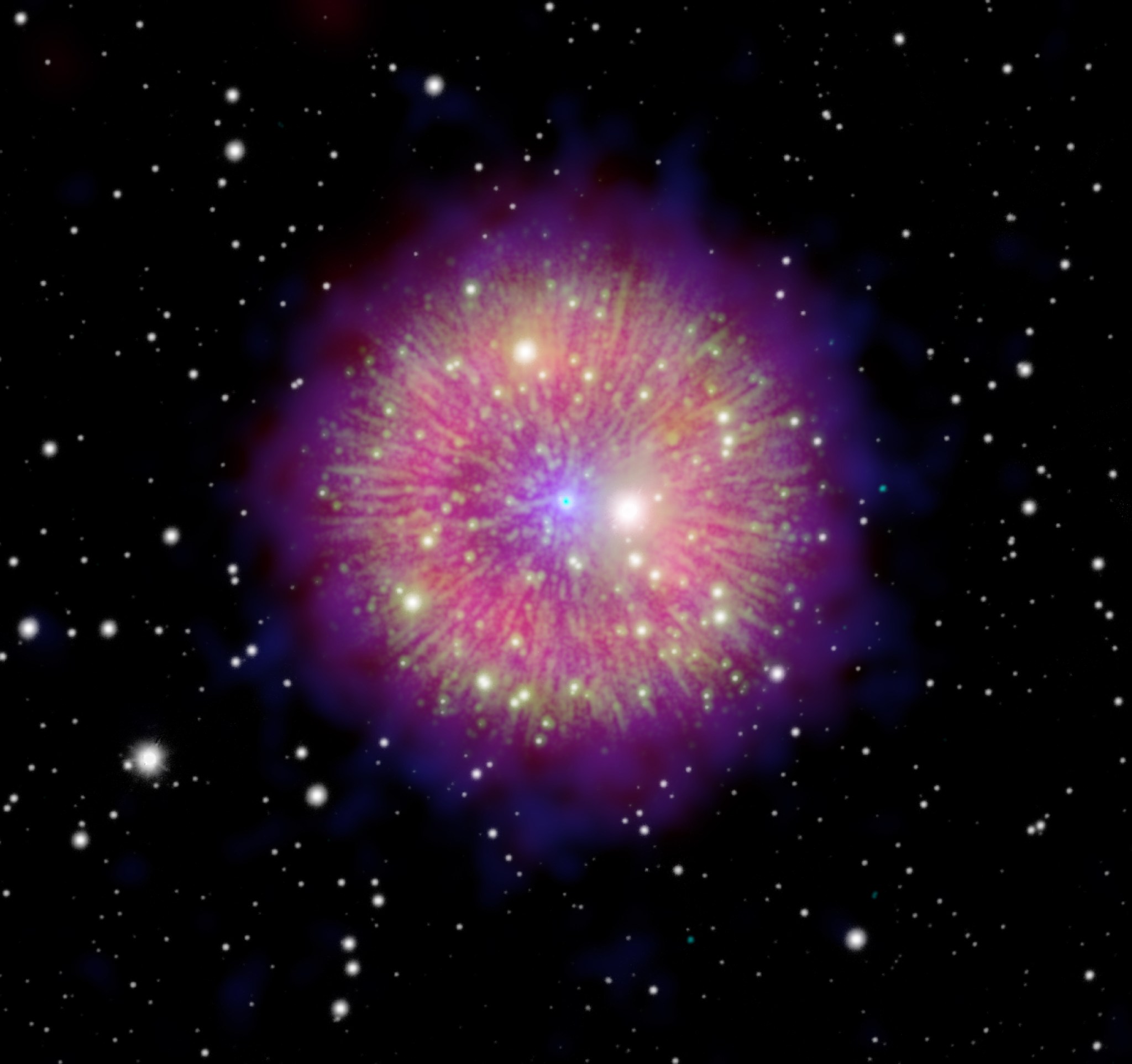
In the last decade, another contender was discovered; Pa 30 is a nearly circular nebula with a central star in the constellation Cassiopeia. It is pictured here combining images from several telescopes. This composite image uses data across the electromagnetic spectrum and shows a spectacular new view of the supernova remnant. This allows us to marvel at the same object that appeared in our ancestors’ night sky more than 800 years ago.
X-ray observations by ESA’s XMM-Newton (blue) show the full extent of the nebula and NASA’s Chandra X-ray Observatory (cyan) pinpoints its central source. The nebula is barely visible in optical light but shines bright in infrared light, collected by NASA’s Wide-field Infrared Space Explorer (red and pink). Interestingly, the radial structure in the image consists of heated sulfur that glows in visible light, observed with the ground-based Hiltner 2.4 m telescope at the MDM Observatory (green) in Arizona, USA, as do the stars in the background by Pan-STARRS (white) in Hawaii, USA.
Studies of the composition of the different parts of the remnant have led scientists to believe that it was formed in a thermonuclear explosion, and more precisely a special kind of supernova called a sub-luminous Type Iax event. During this event two white dwarf stars merged, and typically no remnant is expected for this kind of explosion. But incomplete explosions can leave a kind of ‘zombie’ star, such as the massive white dwarf star in this system. This very hot star, one of the hottest stars in the Milky Way (about 200 000 degrees Celsius), has a fast stellar wind with speeds up to 16,000 km/h. The combination of the star and the nebula makes it a unique opportunity for studying such rare explosions.
NASA’s Marshall Space Flight Center manages the Chandra program. The Smithsonian Astrophysical Observatory’s Chandra X-ray Center controls science operations from Cambridge, Massachusetts, and flight operations from Burlington, Massachusetts.
Read more from NASA’s Chandra X-ray Observatory.
Europa Clipper Survives and Thrives in ‘Outer Space’ on Earth
In less than six months, NASA is set to launch Europa Clipper on a 1.6-billion-mile voyage to Jupiter’s ocean moon Europa. From the wild vibrations of the rocket ride to the intense heat and cold of space to the punishing radiation of Jupiter, it will be a journey of extremes. The spacecraft was recently put through a series of hard-core tests at the agency’s Jet Propulsion Laboratory to ensure it’s up to the challenge.
Called environmental testing, the battery of trials simulates the environment that the spacecraft will face, subjecting it to shaking, chilling, airlessness, electromagnetic fields, and more.
“These were the last big tests to find any flaws,” said JPL’s Jordan Evans, the mission’s project manager. “Our engineers executed a well-designed and challenging set of tests that put the system through its paces. What we found is that the spacecraft can handle the environments that it will see during and after launch. The system performed very well and operates as expected.”
The most recent environmental test for Europa Clipper was also one of the most elaborate, requiring 16 days to complete. The spacecraft is the largest NASA has ever built for a planetary mission and one of the largest ever to squeeze into JPL’s historic 85-foot-tall, 25-foot-wide thermal vacuum chamber (TVAC). Known as the 25-foot Space Simulator, the chamber creates a near-perfect vacuum inside to mimic the airless environment of space.
At the same time, engineers subjected the hardware to the high temperatures it will experience on the side of Europa Clipper that faces the Sun while the spacecraft is close to Earth. Beams from powerful lamps at the base of the Space Simulator bounced off a massive mirror at its top to mimic the heat the spacecraft will endure.
To simulate the journey away from the Sun, the lamps were dimmed and liquid nitrogen filled tubes in the chamber walls to chill them to temperatures replicating space. The team then gauged whether the spacecraft could warm itself, monitoring it with about 500 temperature sensors, each of which had been attached by hand.
TVAC marked the culmination of environmental testing, which included a regimen of tests to ensure the electrical and magnetic components that make up the spacecraft don’t interfere with one another.
The orbiter also underwent vibration, shock, and acoustics testing. During vibration testing, the spacecraft was shaken repeatedly – up and down and side to side – the same way it will be jostled aboard the SpaceX Falcon Heavy rocket during liftoff. Shock testing involved pyrotechnics to mimic the explosive jolt the spacecraft will get when it separates from the rocket to fly its mission. Finally, acoustic testing ensured that Europa Clipper can withstand the noise of launch, when the rumbling of the rocket is so loud it can damage the spacecraft if it’s not sturdy enough.
“There still is work to be done, but we’re on track for an on-time launch,” Evans said. “And the fact that this testing was so successful is a huge positive and helps us rest more easily.”
Later this spring, the spacecraft will be shipped to NASA’s Kennedy Space Center. There, teams of engineers and technicians will carry out final preparations with eyes on the clock. Europa Clipper’s launch period opens Oct. 10.
After liftoff, the spacecraft will zip toward Mars, and in late February 2025, it will be close enough to use the Red Planet’s gravitational force for added momentum. From there, the solar-powered spacecraft will swing back toward Earth to get another slingshot boost – from our own planet’s gravitational field – in December 2026.
Then it’s on to the outer solar system, where Europa Clipper is set to arrive at Jupiter in 2030. The spacecraft will orbit the gas giant while it flies by Europa 49 times, dipping as close as 16 miles from the moon’s surface to gather data with its powerful suite of science instruments. The information gathered will tell scientists more about the moon’s watery interior.
Credit: NASA/JPL-Caltech
Europa Clipper’s main science goal is to determine whether there are places below the surface of Jupiter’s icy moon, Europa, that could support life. The mission’s three main science objectives are to determine the thickness of the moon’s icy shell and its surface interactions with the ocean below, to investigate its composition, and to characterize its geology. The mission’s detailed exploration of Europa will help scientists better understand the astrobiological potential for habitable worlds beyond our planet.
Managed by Caltech in Pasadena, California, JPL leads the development of the Europa Clipper mission in partnership with the Johns Hopkins Applied Physics Laboratory (APL) in Laurel, Maryland, for NASA’s Science Mission Directorate. APL designed the main spacecraft body in collaboration with JPL and NASA’s Goddard Space Flight Center.
The Planetary Missions Program Office at NASA’s Marshall Space Flight Center executes program management of the Europa Clipper mission.
Learn more about Europa.
NASA Sets Coverage for Astronaut Loral O’Hara, Crewmates Return
Three crew members are scheduled to begin their return to Earth on April 5, from the International Space Station. NASA will provide live coverage of their departure from the orbital complex and landing.
NASA astronaut Loral O’Hara, Roscosmos cosmonaut Oleg Novitskiy, and spaceflight participant Marina Vasilevskaya of Belarus will depart from the station’s Rassvet module in the Roscosmos Soyuz MS-24 spacecraft at 10:55 p.m. CDT April 5, and will head for a parachute-assisted landing on the steppe of Kazakhstan, southeast of the town of Dzhezkazgan, at 2:18 a.m. April 6.
Coverage will begin at 7 p.m. on April 5 with farewells and the Soyuz hatch closure on NASA+, NASA Television, the NASA app, YouTube, and the agency’s website. Learn how to stream NASA TV through a variety of platforms including social media.
O’Hara is completing a mission spanning 204 days in space that covered 3,264 orbits of the Earth and 86.5 million miles. Novitskiy and Vasilevskaya launched with NASA astronaut Tracy C. Dyson to the station aboard the Soyuz MS-25 spacecraft on March 23. Dyson will remain aboard the station for a six-month research mission.
After landing, the three crew members will fly on a helicopter from the landing site to the recovery staging city of Karaganda, Kazakhstan. O’Hara then will depart back to Houston.
The HOSC (Huntsville Operations Support Center) at NASA’s Marshall Space Flight Center provides engineering and mission operations support for the space station, the Commercial Crew Program, and Artemis missions, as well as science and technology demonstration missions. The Payload Operations Integration Center within the HOSC operates, plans, and coordinates the science experiments onboard the space station 365 days a year, 24 hours a day.



























